Product Resources
Product Resources
Tissue-imaging platform
Thermo Fisher Scientific announces the launch of a new tissue-imaging platform, combining its Thermo Scientific MALDI LTQ XL™ mass spectrometer with ImageQuest™ software, designed for scientists to analyze whole tissue, biological, and polymer samples without extensive sample preparation. According to the company, this tissue-imaging solution provides researchers with high sensitivity and MSn spectral quality of linear ion trap technology as well as fast sample analysis, compared with the standard practice of homogenizing and extracting from tissue.
Thermo Fisher Scientific,
Waltham, MA;

MS software
Applied Biosystems has released their LightSight Software Version 2.0 for metabolite identification, designed to enable pharmaceutical companies and contract research organizations to screen drug candidates more quickly and accurately. According to the company, the software provides efficient workflows to identify and confirm metabolites from data acquired on Applied Biosystems/MDS SCIEX's triple quadrupole and linear ion trap mass spectrometers.
Applied Biosystems,
Foster City, CA,
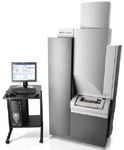
Mass spectrometer
Shimadzu's AXIMA Performance™ mass spectrometer is designed for high-energy MS/MS interrogation of proteomics and biological and organic samples, including peptides, polymers, oligonucleotides, SNPs, metabolites, and carbohydrates. According to the company, the product features full automation, advanced calibration algorithms, data-dependent workflows, and application-centric software.
Shimadzu Scientific Instruments,
Columbia, MD;

Photomultiplier tube
The PHOTONIS Group's XP1322, a 13-mm (0.5 in.) round photomultiplier tube features a combination of high gain and low noise that covers the spectral range of 270–650 nm. The product is designed for applications such as scintillation counting, high-energy physics, life sciences, and bioluminescence. The product is also available in a photon counting grade model.
PHOTONIS Group,
Lancaster, PA;
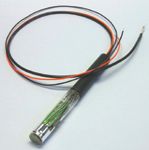
MS system
The Xevo TQ MS System from Waters is an advanced tandem quadrupole mass spectrometer that uses IntelliStart™ and ScanWave™ technologies to deliver advanced quantitative capability to a broad range of scientists. According to the company, IntelliStart is new technology that simplifies instrument setup and time-intensive troubleshooting by automatically ensuring the system is ready for use by performing mass calibration, setting MS resolution, generating compound-specific MS methods (SIR or MRM), and optimizing API source conditions for specific analytical conditions.
Waters Corporation,
Milford, MA;
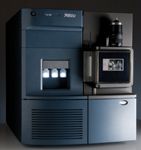
ICP-MS
The new 7500cx from Agilent reportedly introduces a new concept in ICP-MS: interference-free analysis of all elements in any matrix, under a single set of operating conditions. According to the company, the unique ORS technology can use pure helium (He) collision mode for all elements for easy, ppt-level quantification in the most challenging sample matrices.
Agilent Technologies, Inc.,
Wilmington, DE;
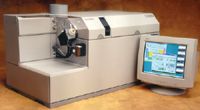
Portable GC-TMS system
The Guardion-7 portable GC–MS system by Torion features a low-thermal-mass capillary gas chromatograph with ballistic temperature programming and a miniature torodial ion trap mass spectrometer with a mass range of 50 to 500 Da. According to the company, the system is totally self-contained, hand-portable, battery operated, and weighs less than 28 pounds.
Torion Technologies, Inc.,
Pleasant Grove, UT;
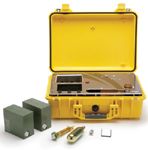
Mass spectrometer
Bruker Daltonics introduces the apex-ultra FTMS mass spectrometer, which reportedly features a wide dynamic range, high resolving power, high mass accuracy, and fast data acquisition. According to the company, the product is designed for top-down proteomics and the analysis of complex mixtures in applications such as metabolomics or petroleomics.
Bruker Daltonics,
Billerica, MA;
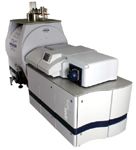
Ion sources
Prosolia's Omni Spray Ion sources are a series of ionization sources based on desorption electrospray ionization (DESI). DESI is a simple, sensitive, gentle, and versatile ionization method that allows for the direct and rapid sampling of surfaces without any sample preparation and under ambient temperature and pressure conditions. According to the company, with this source, scientists are able to analyze both large and small molecules from a variety of surfaces.
Prosolia, Inc.,
Indianapolis, IN;
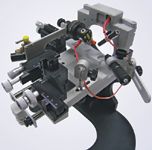
MS system
The Waters Synapt High Definition MS (HDMS) system is designed for researchers working at the limits of conventional MS and who need to further characterize and define complex samples. The system reportedly uses an ion-mobility-based measurement and software to analyze sample ions differentiated by size and shape. According to the company, this additional dimension of separations fidelity leads to improved specificity and sample definition.
Waters Corporation,
Milford, MA;
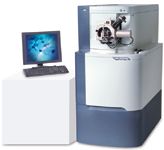
Reference materials catalog
Inorganic Ventures introduces its 2008–2009 catalog of stocked certified reference materials, featuring standards for ICP, ICP-MS, IC, AA, wet chemistry, and the latest EPA methods. According to the company, products are color-coded by application and indexed by both catalog number and subject.
Inorganic Ventures,
Lakewood, NJ;
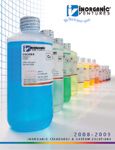
Mass spectrometer
Bruker Daltonics announces their next-generation Qq-TOF mass spectrometer: the micrOTOF™-Q II, designed for accurate mass LC/MS/MS performance in proteomics, biomarker profiling, metabolomics and other small molecule applications. According to the company, the product offers the on-the-fly SmartFormula™ 3D method for the unambiguous sum formula determination of small molecules.
Bruker Daltonics,
Billerica, MA;
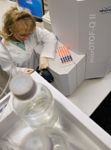
eLD LC–MS system
The Hitachi NanoFrontier is the first commercial LCMS system that combines the separation of NanoLC with the high sensitivity of a linear ion trap and the high performance of a time-of-flight mass analyzer, which reportedly allows for operation in LIT mode for MSn (CID and ECD) or Q-TOF mode for MS-MS. According to the company, the product provides high performance (resolution, dynamic range) and tools for the analysis and data processing of small and large bio-molecules.
Hitachi High Technologies America,
San Jose, CA;
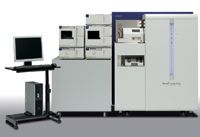
Sample preparation system
MicroLiter's Instrument Top Sample Prep (ITSP) system is designed for any PAL sample handler to filter and separate samples. The system reportedly uses normal SPE chemistries to separate samples using the autosampler while the instrument analyses the prior sample. According to the company, the system reduces the labor and additional equipment required for sample preparation.
Microliter Analytical Supplies, Inc.,
Suwanee, GA;
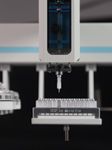
Safety waste cap
Analytical Sales & Services' SCAT safety waste cap with funnel features two ports for 2.3-and 3.2-mm o.d. tubing and an exhaust filter that prevents the escape of hazardous vapors. The cap also features a spring-loaded safety button that opens the funnel.
Analytical Sales & Services, Inc.,
Pompton Plains, NJ;

Mass spectrometer
Thermo Fisher Scientific's LTQ Orbitrap XL mass spectrometer is designed for protein identification and biomarker discovery. The instrument reportedly features high sensitivity in MS and MSn , a rapid scan rate, high mass accuracy, and up to 100K resolution power. According to the company, the product includes an octapole collision cell for increased flexibility in MS-MS fragmentation applications such as peptide quantitation, PTM analysis, de novo sequencing, and metabolomics research.
Thermo Fisher Scientific,
Waltham, MA;
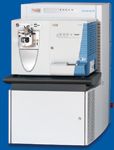
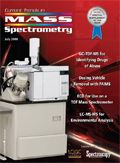
New Study Reveals Insights into Phenol’s Behavior in Ice
April 16th 2025A new study published in Spectrochimica Acta Part A by Dominik Heger and colleagues at Masaryk University reveals that phenol's photophysical properties change significantly when frozen, potentially enabling its breakdown by sunlight in icy environments.